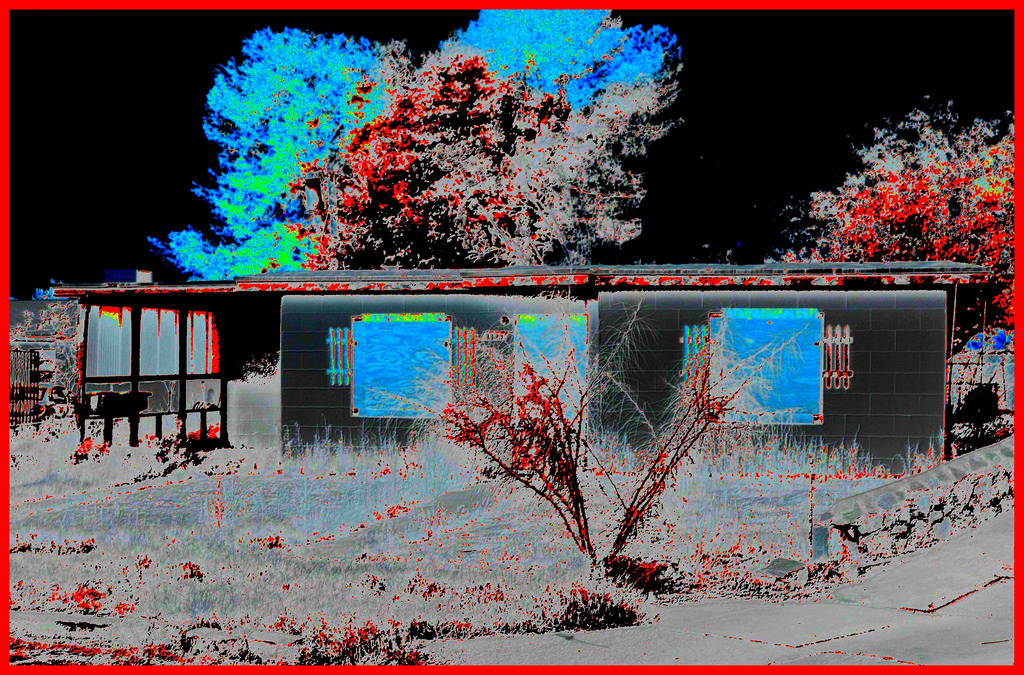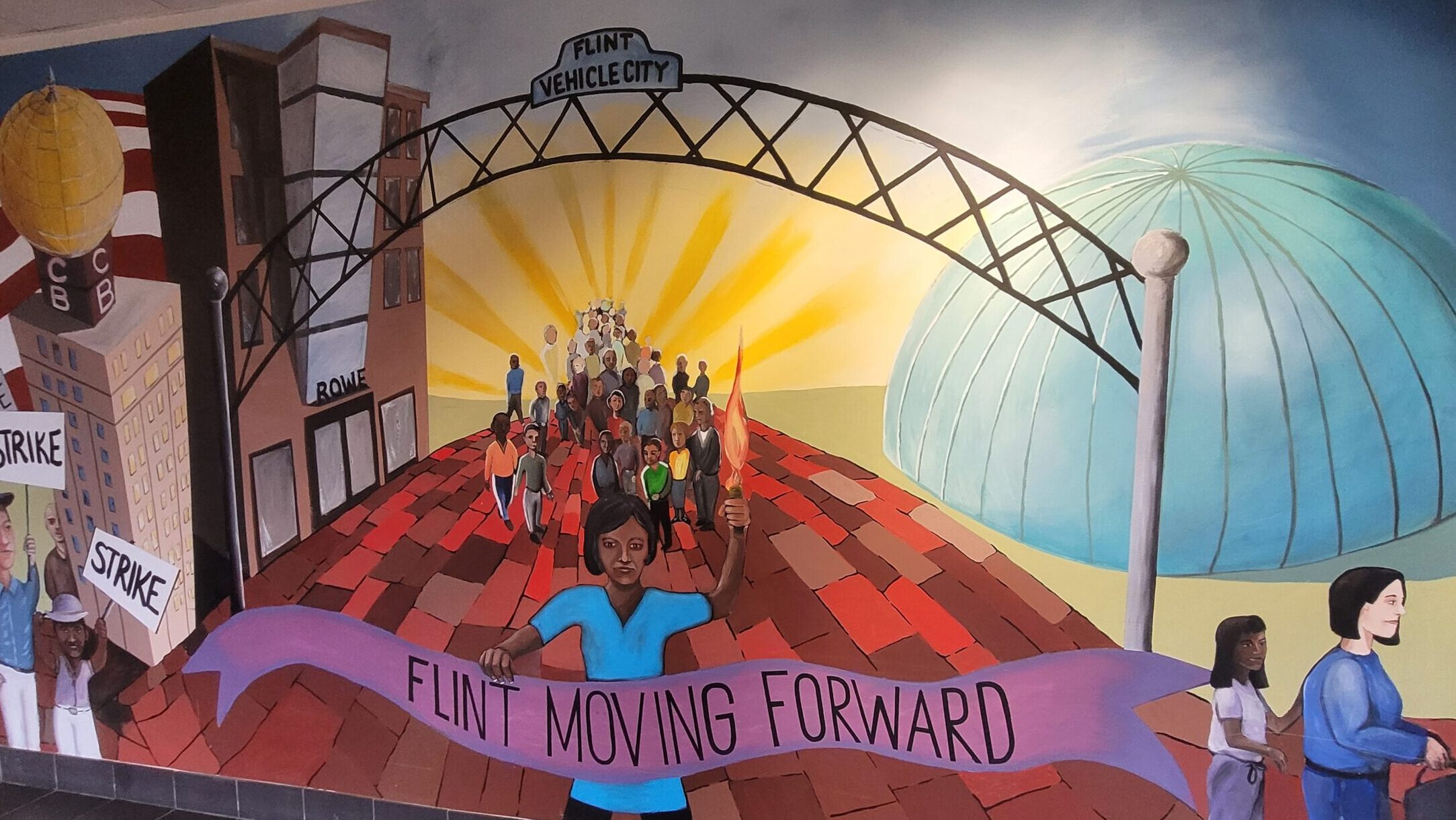 Jan, Flickr
Jan, FlickrI have had a note on my phone for years, in which I’ve been collecting images of, and text about, anomalous spaces: architectural oddities, compromised environments, haunted houses, cities and towns disrupted by trauma. Some of these notes are ideas for story elements: windows that, polarized in a certain way, can be used to see into the past; an apartment that has been divided into infinitely small rooms. A few are fanciful things my sons came up with when they were younger: a mysterious bus, a kite flown by no one. I’ve got a picture of a lighthouse, awkwardly positioned among the half-abandoned casinos of Atlantic City, and another of a house that has washed into the middle of an urban intersection during a flood. I’ve got images of malls and office buildings erected during an economic collapse and never occupied, and several different kinds of elaborate knitted infant’s crib mobiles, which I imagined blown up to tremendous size, like Claes Oldenburg sculptures.
I also like walking around unfamiliar cities and towns and taking note of how they must have been made, and for what purpose, and how that purpose got subverted over time. And I like dreams, and I’m interested in trauma and its effects. And I’d been playing a lot of semi-open-world video games, the kind that seem uncannily real until you bump up against their strange and arbitrary limits—buildings that can’t be entered, portions of the map that can’t be visited. This all seemed related to the note on my phone, but I wasn’t sure how—I was just hoping it would add up to a novel, eventually, but for a long time, it didn’t.
Then, one day, I was checking into a bed-and-breakfast run by two elderly ladies, and they said to me, “Feel free to come down anytime and work on the puzzle,” and pointed to an enormous dining room table on which a gazillion-piece puzzle lay in a state of semi-completion.
That’s the first line of my next novel, Subdivision, at least for the moment: “At my guesthouse, I was invited to come downstairs anytime and work on the puzzle.” I wrote that and just kept going, drawing periodically from the note on my phone. I’ve never written a novel draft faster, and with such unbridled pleasure. I said no to everything anyone asked me to do, so that I could write as many as six or seven pages a day. There was a sadness to it, realizing that writing had never been more pleasurable and might never be this pleasurable again. It certainly hasn’t been since.
But that’s not to say the resulting book was any good. Inspiration, I know from experience, is often a kind of self-deception. Sometimes “inspired” work feels frictionless because it isn’t really work—it’s just a regurgitation of the familiar, the comforting. It feels so easy because it’s something the writer already knows how to do. And what might seem thrillingly propulsive to a reader is often the result of meticulous, counterintuitive drudgery on the writer’s part—a detached dissection and reassembly of an early draft, grounded not in the joy of creation but in the chilly analysis of what does and doesn’t serve the story’s needs.
The first draft of Subdivision, I think, fell somewhere in between deceptive joyride and genuine inspiration. Early readers saw a second draft in which I cursorily smoothed over some of the book’s roughest edges; they thought I might be onto something, but also that I hadn’t really grappled with what the draft had uncovered. Another draft later, my editor agreed. It was time to start revising for real.
The fun in writing novels, for me, has often come from the tension between traditional forms, which for the most part I love, and the ideas I tend to get, which never really fit into the forms. As a reader, I’m always delighted when a clever writer takes a familiar kind of story and finds a way to break it and reassemble it; for this reason I’m drawn, in my reading, to the margins of genres, where people who clearly love the rules lovingly disobey them.
There are pitfalls to this approach, of course. How many times have you seen the description “literary thriller” and gritted your teeth in anticipation of it not quite working? Often, the elements of fiction, especially familiar genres of fiction, that most whet the appetite of readers are the same ones that writers wish to subvert or eliminate. And the readers who aren’t interested in the genre that the writer is cannibalizing might find the transplanted elements distasteful or dull. The danger, of course, is that the writer ends up satisfying no one, even herself.
Nevertheless, that’s what I’ve been trying to do for the last 10 years: borrow from genres I like to read. Elements of science fiction, horror, and crime fiction have made their way into my last few novels, giving me some familiar narrative benchmarks to reach, or strategically not bother to reach. Though I did a lot of revision on these novels—Castle, Familiar, and Broken River—the challenge in doing so came less from figuring out what to do than from actually doing it. The established structures of their borrowed genres, along with the conventions of the character-focused literary fiction that is ostensibly what I’m supposed to be writing, gave me some clear paths forward. I just had to choose something and try it out.
But Subdivision is posing a different sort of problem. Though it unfolds like a nightmare, it isn’t a horror novel. Though impossible things happen in it, it isn’t science fiction or fantasy. And though criminal actions precipitate its narrative, it isn’t a mystery. But you wouldn’t call it experimental, either. Its language is straightforward and clear, and it’s propelled by plot and character, like any conventional story—and yet, it’s the kind of book where basically anything can happen next.
This is usually the point when I rely most on the familiar conventions of novels to expand and refine the work. Character’s motivations unclear? Throw in a few flashbacks. Character relationships poorly defined? Add a conversation, an argument, a betrayal or reconciliation. If the plot is too smooth, put obstacles in the character’s path; if it feels flaccid, give her goals, strategic successes and failures. If the book is borrowing from crime fiction, drop a clue; if it’s borrowing from horror, give somebody a scare.
The problem with this book is that my protagonist is a traumatized amnesiac who refuses even to acknowledge that she has a past, let alone recall it; and her character arc depends on her stubborn resistance to the world’s efforts to push her forward. As a result, there can be no flashbacks, despite the importance, in the narrative, of the past; and the advancement of the plot can’t come from the protagonist’s natural reactions to emotions and events.
So what do you do when you can add almost anything to a novel—that is, except the most obvious things that you’ve relied on for 25 years? I’m still not entirely sure. The book is still a draft or two from completion, but I can say that the best new additions have come from a deeper dive into metaphor. I’ve resisted going back and rereading the writers who inspired it, for fear of cribbing from their playbooks, and instead drew more heavily from the deserted infrastructure of Fallout 4 and Everybody’s Gone to the Rapture, and the space-transforming conceptual and installation art of Marina Abramović and Rachel Whiteread. I listened to a bunch of vaporwave and watched and rewatched Twin Peaks: The Return. I tried to sleep better.
The result, I hope, is something like . . . Kafka with boss battles? Hideo Kojima’s The Wizard of Oz? Grand Theft Munro? If I’ve been reminded of anything trying to revise this book, it’s that you really can’t depend on what you’ve done before to solve new problems: every story should turn you back into an amateur. And maybe, in the end, that’s why when writing, when it goes well, gives you the frisson of doing something for the first time, even when you’re really doing it for the third, or fourth, or tenth.
…
The Puzzle, the Solution is a (new) Popula column in which writers talk about story problems, and story solutions.




